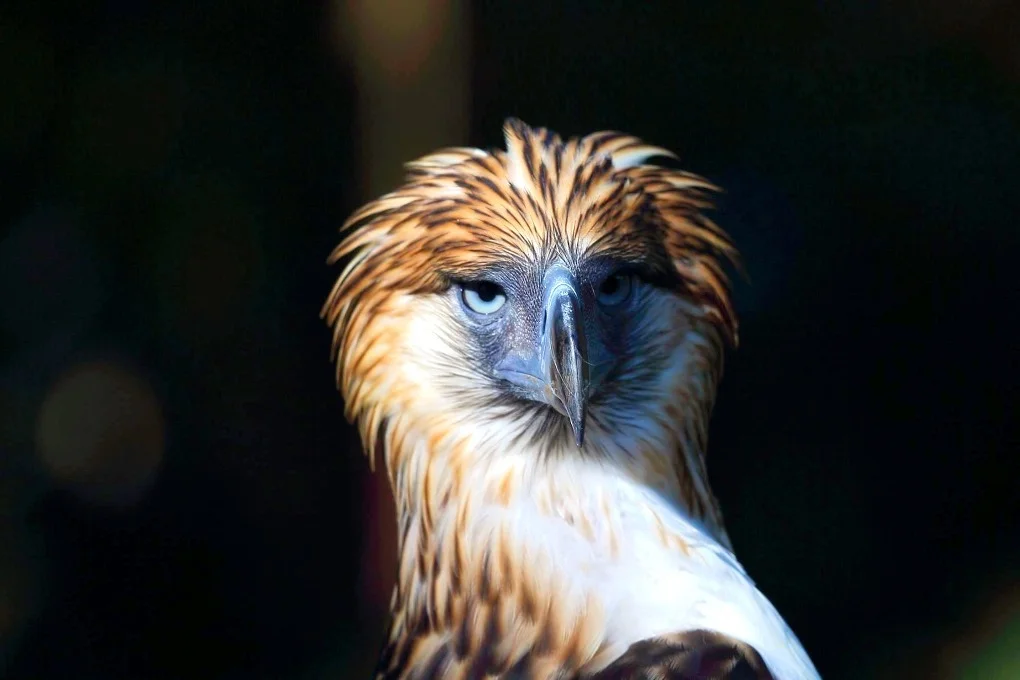
Philippine Eagle of Mindanao
Mindanao is not for everyone. Since the 1960s, the island has had a long history of armed resistance against the Philippine government, which is still lingering. However, the Christian-majority country views the increasing Islamic state’s influence in some parts of the island as a more severe threat, hence numerous military interventions initiated in 2015 are continuing.
Many social scientists believe the island’s prevailing poverty is the root cause of all problems, including the startling deforestation rate fueling many natural disasters on this beautiful island. It is also one of the reasons for the alarming rate of species loss. Many bird species are on the verge of extinction today due to irresponsible deforestation that began decades ago. One of them is the magnificent Philippine eagle, which is also the country’s national bird.
Travelling to Mindanao for Birdwatching
The Philippine eagle (Pithecophaga jefferyi), also known as the monkey-eating eagle or the great Philippine eagle, is a massive eagle that can only be found in the Philippines. The Mt. forest of Kitungald was previously considered an excellent place to see birds. Still, after a guide was shot in a crossfire between communist guerrillas and the military in 2015, many birders avoided visiting this area due to security fears. Despite this, we arrived in Mindanao on time!
The trip to the base of Mt. Kitungald took over 3 hours and was uneventful, but driving up the mountain in a 4WD vehicle through the sticky mud road was difficult. We arrived at the top around 11 a.m. and birded until the evening without seeing the eagle. We saw military vehicles passing by as we drove from the airport to this location, and we were also stopped for questioning at numerous checkpoints by the military. It was not so intimidating because they were gentle soldiers.
In conclusion, travelling to Mindanao for birdwatching is not without its challenges. The security situation in some areas of the island may deter some birders, but for those who are willing to take the risk, the chance to see the critically endangered Philippine eagle is worth it.
PICOP Area Birding
Nonetheless, due to the general unease and fear of a possible attack, it was decided to leave Mt Kitungalad ahead of schedule and travel to Bisling, which is safer and home to many endemic birds. Bisling is well-known for its PICOP (Paper Industries Corporation of the Philippines) company, which used to own large parcels of land and forest in the surrounding area. Although the company ceased operations in 2008, large-scale illegal tree-cutting and mining continue to be carried out by local power groups. It is a heartbreaking and gloomy sight for any nature lover to witness.
A few days were spent in Bisling photographing rare birds such as the Azure Pitta, Mindanao Hornbill, and Rufus paradise flycatcher. However, seeing and photographing the eagle remained a pipe dream in our minds. It was quickly realized that the only way to see the bird was to travel to the Philippine Eagle Centre, which was just over 4 hours away. After spending four nights in Bisling, a drive to Davos was undertaken
The Philippine Eagle Center appears to be a blend of a breeding facility, a rescue facility, and a zoo. It is believed to be the only place in the Philippines where a Philippine eagle can be seen up close. At the time of our visit, three male birds were being treated at the center, and all seemed to be in good health. We were informed by the center staff that one of the eagles would soon be released into the wild.
The bird is affectionately referred to by locals as “Haribos,” which means “The King of the Forest.” When a Philippine Eagle is encountered up close, it can be a little intimidating, and in my case, I unknowingly bowed my head out of respect.
This trip was organized by my friend Ray Sta Ana, to whom I express my sincere thanks.

